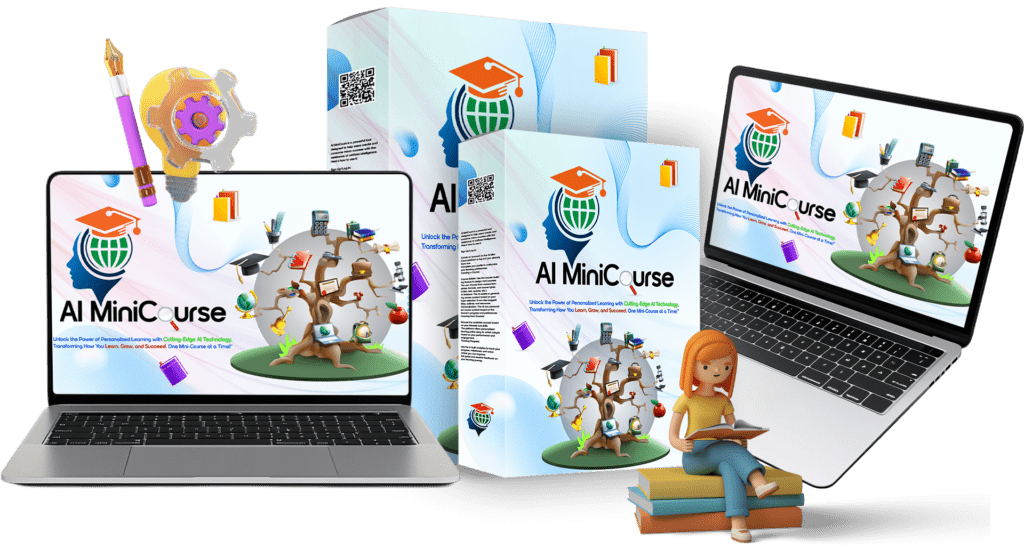Introduction to Artificial Intelligence
Artificial Intelligence (AI) is the simulation of human intelligence in machines that are programmed to think, learn, and problem-solve like humans. AI can be used in a variety of applications, such as voice recognition, image processing, autonomous vehicles, and more.

Key Types of AI:
- Narrow AI: AI that is designed to handle a specific task (e.g., Siri or Google Assistant).
- General AI: A theoretical type of AI that can perform any intellectual task that a human can.
- Super intelligent AI: AI that surpasses human intelligence in all aspects.
get more details click here
Module 2: The Basics of Machine Learning
Machine Learning (ML) is a subset of AI where machines learn from data without explicit programming. ML algorithms can identify patterns, make predictions, and improve over time.
Types of Machine Learning:
- Supervised Learning: The algorithm learns from labeled data (input-output pairs).
- Unsupervised Learning: The algorithm works with unlabeled data to identify patterns or clusters.
- Reinforcement Learning: The algorithm learns by receiving feedback in the form of rewards or penalties.
Module 3: Neural Networks and Deep Learning
Deep Learning (DL) is a specialized branch of machine learning that uses neural networks to analyze vast amounts of data. Neural networks are inspired by the human brain and consist of layers of nodes that process information.
Components of Neural Networks:
- Input Layer: Receives the initial data.
- Hidden Layers: Process the data through weighted connections.
- Output Layer: Provides the final result or prediction.

Module 4: Applications of AI
AI is revolutionizing various industries. Here are some common applications:
- Healthcare: AI can assist in diagnosing diseases, analyzing medical images, and predicting patient outcomes.
- Finance: AI is used for fraud detection, algorithmic trading, and customer support.
- Entertainment: Streaming services like Netflix use AI to recommend content based on user preferences.
- Autonomous Vehicles: AI enables self-driving cars to navigate and make decisions on the road.
Module 5: Ethical Considerations in AI
As AI becomes more powerful, ethical concerns arise:
- Bias in AI: AI systems can inherit biases from the data they are trained on, leading to unfair or discriminatory outcomes.
- Job Displacement: AI can automate tasks traditionally performed by humans, leading to concerns about unemployment.
- Privacy: AI systems that collect personal data must ensure privacy and security to protect individuals.
Module 6: Getting Started with AI
To start learning and working with AI:
- Learn the Basics: Start with programming languages like Python, which is widely used in AI development.
- Explore ML Frameworks: Familiarize yourself with popular tools like TensorFlow, Keras, and Scikit-learn.
- Practice on Projects: Apply your knowledge to small projects, such as building a recommendation system or training a classifier.
more info click here

Module 7: Advanced Topics in AI
As you build a foundation in AI, you may want to dive deeper into more complex topics. Here are some key advanced areas within AI:
1. Natural Language Processing (NLP)
NLP is a subfield of AI that focuses on enabling machines to understand and process human language. This includes tasks like speech recognition, sentiment analysis, and machine translation. Common NLP applications include virtual assistants like Siri and chatbots.
Key Techniques in NLP:
- Tokenization: Breaking down text into smaller units (tokens) like words or phrases.
- Named Entity Recognition (NER): Identifying proper names in text (e.g., people, organizations).
- Word Embeddings: Representing words as vectors in a high-dimensional space to capture semantic meaning.
2. Computer Vision
Computer Vision allows machines to interpret and make decisions based on visual data (images or video). It’s used in various industries such as healthcare (analyzing medical images), automotive (self-driving cars), and entertainment (image recognition in social media platforms).
Key Tasks in Computer Vision:
- Object Detection: Identifying and locating objects within an image or video stream.
- Image Classification: Categorizing an image into predefined labels (e.g., dog, cat, car).
- Facial Recognition: Identifying or verifying a person based on their facial features.
3. Generative Models
Generative models, such as Generative Adversarial Networks (GANs), are capable of creating new data based on patterns learned from existing data. GANs consist of two neural networks (a generator and a discriminator) that work against each other to produce realistic data (e.g., images, music, text).
Module 8: Tools and Libraries for AI Development
In order to develop your own AI models and projects, there are numerous powerful libraries and frameworks that you can use. Here’s a list of the most popular ones:

1. TensorFlow
Developed by Google, TensorFlow is an open-source library for building machine learning and deep learning models. It’s especially useful for training large-scale neural networks and deploying AI models in production environments.
2. Keras
Keras is a high-level neural networks API that runs on top of TensorFlow, making it easier to build and experiment with deep learning models. It’s widely popular for its simplicity and user-friendly design.
3. PyTorch
PyTorch is another deep learning framework, favored for research and development due to its dynamic computation graph and ease of debugging. It’s used extensively in academic settings and has gained popularity in industry as well.
4. Scikit-learn
Scikit-learn is a simple and efficient tool for data mining and data analysis. It includes various algorithms for classification, regression, clustering, and dimensionality reduction.
5. OpenCV
OpenCV is an open-source computer vision library that allows developers to build applications for image and video analysis. It’s often used for real-time object detection and face recognition.
Module 9: AI in Industry and Society
AI is reshaping multiple industries and areas of society. Let’s take a closer look at some major sectors where AI is having a transformative impact:
1. Healthcare
AI has the potential to revolutionize healthcare by improving diagnostic accuracy, personalizing treatment plans, and optimizing operations. AI models can analyze medical images, detect diseases early, and predict patient outcomes.
2. Finance
In the financial industry, AI is used for algorithmic trading, fraud detection, and credit scoring. Machine learning algorithms can analyze large datasets to identify trends and provide more accurate predictions, improving decision-making.
3. Retail
AI-powered systems in retail analyze customer data to offer personalized shopping experiences. These include product recommendations, targeted marketing, and chatbots that assist customers in real-time.
4. Transportation
Self-driving cars and drones are two significant applications of AI in transportation. AI algorithms allow these systems to analyze their surroundings, make decisions, and navigate safely without human intervention.
Module 10: The Future of AI
The future of AI holds incredible possibilities. Here are some trends and predictions for the coming years:
1. Ethical AI and Governance
As AI becomes more embedded in everyday life, concerns about fairness, privacy, and accountability are growing. The development of ethical guidelines and regulations will play a crucial role in ensuring AI benefits society without causing harm.
2. AI in Creativity
AI is becoming more involved in creative fields, from generating art to composing music and writing stories. Tools like DALL·E and GPT are already showing how AI can collaborate with human creators to produce novel and innovative work.
3. AI in Human-Computer Interaction
The future of AI may involve more natural interactions between humans and machines. Voice assistants, augmented reality (AR), and virtual reality (VR) combined with AI could lead to more immersive and intuitive human-computer interfaces.
4. Artificial General Intelligence (AGI)
AGI is the hypothetical future version of AI that can perform any intellectual task a human being can. While AGI is still far from realization, ongoing research in deep learning and cognitive modeling may eventually lead to the development of systems that closely mirror human intelligence.
Conclusion: Starting Your AI Journey
Artificial Intelligence is an exciting and rapidly evolving field. Whether you are interested in building AI systems, working in an AI-related industry, or simply want to understand its impact, this mini-course has given you the foundation to begin your journey.
To continue growing your AI skills, consider:
- Participating in AI-related competitions (e.g., Kaggle).
- Reading books, papers, and articles on the latest AI research.
- Attending AI webinars and conferences to network with professionals in the field.
AI is the future, and it’s a journey worth embarking on. Best of luck as you continue your exploration of artificial intelligence!

